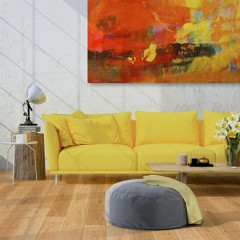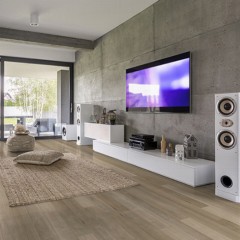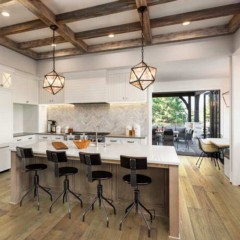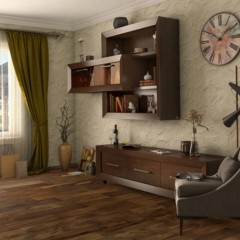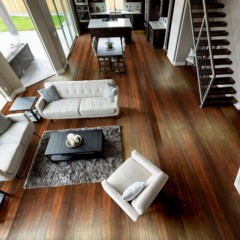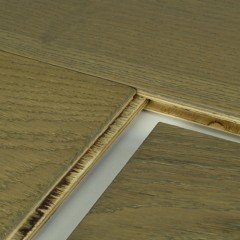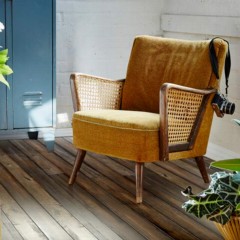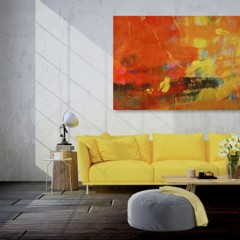Veneer Flooring
-
$22143 /Carton You Save 25%$7.07/sqftShips Out in 3-5 Working DaysShop
-
$15557 /Carton You Save 25%$5.76/sqftShips Out in 4-6 Working DaysShop
-
$23153 /Carton You Save 24%$6.43/sqftShips Out in 4-6 Working DaysShop
-
$30449 /Carton You Save 24%$7.34/sqftShips Out in 4-6 Working DaysShop
-
$15199 /Carton You Save 24%$4.19/sqftShips Out in 4-6 Working DaysShop
-
$15664 /Carton You Save 24%$6.02/sqftShips Out in 4-6 Working DaysShop
-
$18293 /Carton You Save 24%$6.42/sqftShips Out in 4-6 Working DaysShop
-
$16346 /Carton You Save 25%$6.29/sqftShips Out in 4-6 Working DaysShop
-

-
$15330 /Carton You Save 24%$4.06/sqftShips Out in 4-6 Working DaysShop
1
One of the best solutions for customers who want the look of hardwood flooring without the need to hire a professional installer is veneer flooring planks from Greatmats. Our engineered hardwood flooring greatly outperforms laminate, creating a warm look.
Because the veneer layer consists of actual hardwood, it contains fine details and characteristics that match the look of a vintage hardwood floor, all at a reasonable cost compared to the real thing.
Most of our veneer flooring products further enhance their realistic look by using random lengths of planks in the same carton. This closely mimics the look of a real hardwood layout, where installers do not want the ends of the planks to line up row to row.
Lengths of planks within a single carton may range from around 1 foot to 7 feet. Installers can also cut the planks to fit tightly against a wall or cabinet as needed.
When ordering these engineered wood planks, pay attention to the square footage per carton. Even with the varying lengths of the planks, the square footage will remain the same from carton to carton.
Within a single family of wood floor planks, they will usually have the same width. We offer narrow planks around 4.5 inches that provide one look, as well as wide planks around 8.5 inches that generate a completely different look.
The thickness measurement for these veneer flooring planks is typically around 1/2 inch.
The beauty of the design of our veneer flooring lies in the materials used.
Each plank uses a base layer of plywood to provide stability and the majority of the thickness of the flooring. However, no one wants to see a plywood floor.
The manufacturer attaches the veneer layer over top of the plywood. The veneer layer is extremely thin, usually measuring around 3 mm thick (or about 1/8 inch).
Because the veneer consists of real hardwood, it gives the flooring the desired look without needing to use this expensive wood throughout the entire thickness of the plank. The veneer layer completely hides the plywood, so no one who sees the flooring will know it is engineered hardwood.
The design of this flooring results in a clean look that will enhance the decor of any room. Maple, oak, and birch are common types of wood used for the veneer flooring layer.
Customers can select from numerous stain colors in the veneer layer with this flooring product. Light browns, dark browns, and multiple shades in between will help customers find the perfect look. Semi-gloss finishes are available too.
The veneer layer often includes a beveled edge, which enhances the realistic look of the planks. This is the exact design you would expect to find if installing a real hardwood floor.
Wire brushing, hand staining, natural wood grains, knots, and the creation of a random sawn design all enhance the pattern of the final layout of the veneer flooring. This is a highly durable style of flooring, often offering a 35-year limited warranty.
Use this flooring anywhere you would like to see a natural hardwood floor. These floors will work in many different rooms in a home. Some people will install these floors in a vacation cabin, creating a warmth that other types of flooring cannot match.
For a business, these richly engineered hardwood floors look great in areas that are customer-facing. They have a high level of durability, which makes them a good value over time. They’re also easier to clean than some other kinds of flooring.
Installing our wood planks will work as a DIY project. They have a tongue-and-groove edge, which makes the installation process similar to that of vinyl planks.
Installers can select a floating floor design, where the installer only slides the planks together with the tongue and groove edges. For this type of installation, there is no need to glue the planks together or to nail them to the subfloor.
For a more permanent installation, adhesive or nails will deliver the desired results.
Start the installation process in one corner of the room. Make a row across the length of the room, cutting a plank to fit in the corner as needed. Then start the second row, connecting the planks by the tongue and groove system. Stagger the ends of the planks from row to row.
Customers will care for this veneer-layered floor in the same manner that they would care for a hardwood floor, including refinishing as needed.
Use a broom or vacuum to remove dry debris from the floor on a regular basis. Avoid vacuuming with a beater bar. If there is a spill or pet accident on the flooring, try to remove it as soon as possible.
For more thorough cleaning needs, use a wood floor cleaning product. Avoid saturating the floor, as excess moisture could lead to warping or staining of the flooring’s veneer layer.
Because the veneer layer consists of actual hardwood, it contains fine details and characteristics that match the look of a vintage hardwood floor, all at a reasonable cost compared to the real thing.
Size and Shape Options
Most of our veneer flooring products further enhance their realistic look by using random lengths of planks in the same carton. This closely mimics the look of a real hardwood layout, where installers do not want the ends of the planks to line up row to row.
Lengths of planks within a single carton may range from around 1 foot to 7 feet. Installers can also cut the planks to fit tightly against a wall or cabinet as needed.
When ordering these engineered wood planks, pay attention to the square footage per carton. Even with the varying lengths of the planks, the square footage will remain the same from carton to carton.
Within a single family of wood floor planks, they will usually have the same width. We offer narrow planks around 4.5 inches that provide one look, as well as wide planks around 8.5 inches that generate a completely different look.
The thickness measurement for these veneer flooring planks is typically around 1/2 inch.
Material Options
The beauty of the design of our veneer flooring lies in the materials used.
Each plank uses a base layer of plywood to provide stability and the majority of the thickness of the flooring. However, no one wants to see a plywood floor.
The manufacturer attaches the veneer layer over top of the plywood. The veneer layer is extremely thin, usually measuring around 3 mm thick (or about 1/8 inch).
Because the veneer consists of real hardwood, it gives the flooring the desired look without needing to use this expensive wood throughout the entire thickness of the plank. The veneer layer completely hides the plywood, so no one who sees the flooring will know it is engineered hardwood.
Pattern and Texture Options
The design of this flooring results in a clean look that will enhance the decor of any room. Maple, oak, and birch are common types of wood used for the veneer flooring layer.
Customers can select from numerous stain colors in the veneer layer with this flooring product. Light browns, dark browns, and multiple shades in between will help customers find the perfect look. Semi-gloss finishes are available too.
The veneer layer often includes a beveled edge, which enhances the realistic look of the planks. This is the exact design you would expect to find if installing a real hardwood floor.
Wire brushing, hand staining, natural wood grains, knots, and the creation of a random sawn design all enhance the pattern of the final layout of the veneer flooring. This is a highly durable style of flooring, often offering a 35-year limited warranty.
Common Use Options
Use this flooring anywhere you would like to see a natural hardwood floor. These floors will work in many different rooms in a home. Some people will install these floors in a vacation cabin, creating a warmth that other types of flooring cannot match.
For a business, these richly engineered hardwood floors look great in areas that are customer-facing. They have a high level of durability, which makes them a good value over time. They’re also easier to clean than some other kinds of flooring.
Installation Options
Installing our wood planks will work as a DIY project. They have a tongue-and-groove edge, which makes the installation process similar to that of vinyl planks.
Installers can select a floating floor design, where the installer only slides the planks together with the tongue and groove edges. For this type of installation, there is no need to glue the planks together or to nail them to the subfloor.
For a more permanent installation, adhesive or nails will deliver the desired results.
Start the installation process in one corner of the room. Make a row across the length of the room, cutting a plank to fit in the corner as needed. Then start the second row, connecting the planks by the tongue and groove system. Stagger the ends of the planks from row to row.
Cleaning and Maintenance Requirements
Customers will care for this veneer-layered floor in the same manner that they would care for a hardwood floor, including refinishing as needed.
Use a broom or vacuum to remove dry debris from the floor on a regular basis. Avoid vacuuming with a beater bar. If there is a spill or pet accident on the flooring, try to remove it as soon as possible.
For more thorough cleaning needs, use a wood floor cleaning product. Avoid saturating the floor, as excess moisture could lead to warping or staining of the flooring’s veneer layer.
